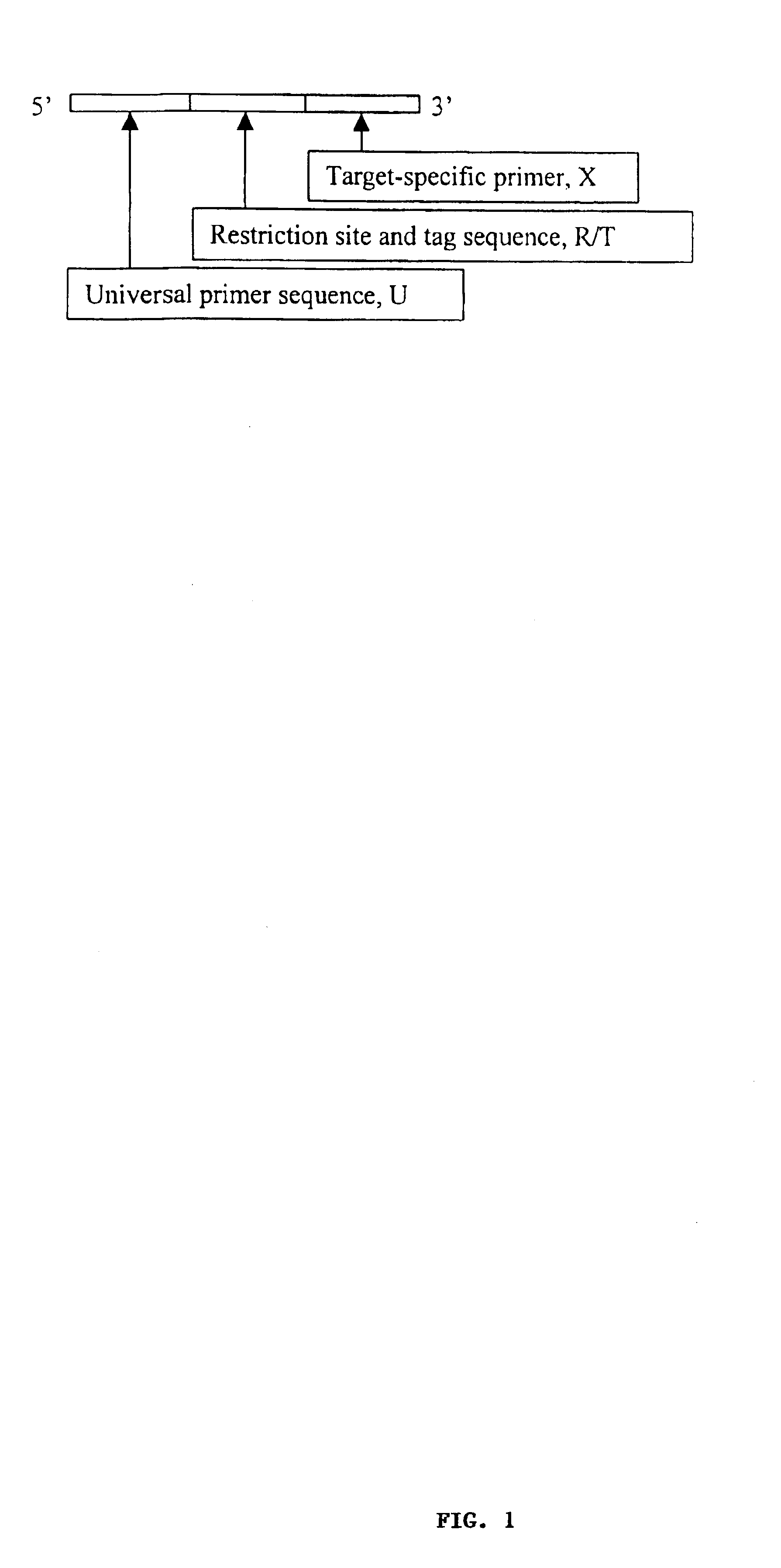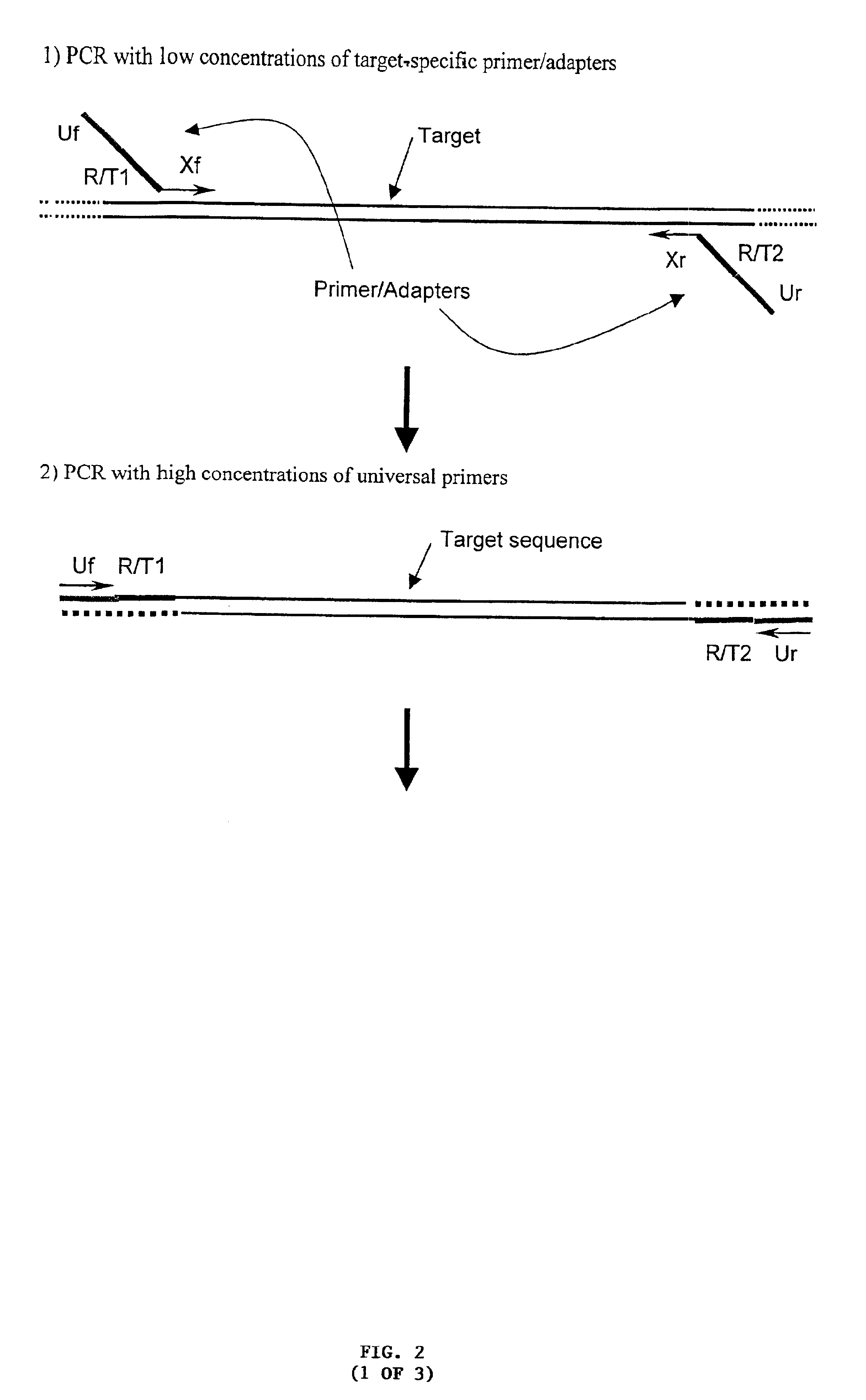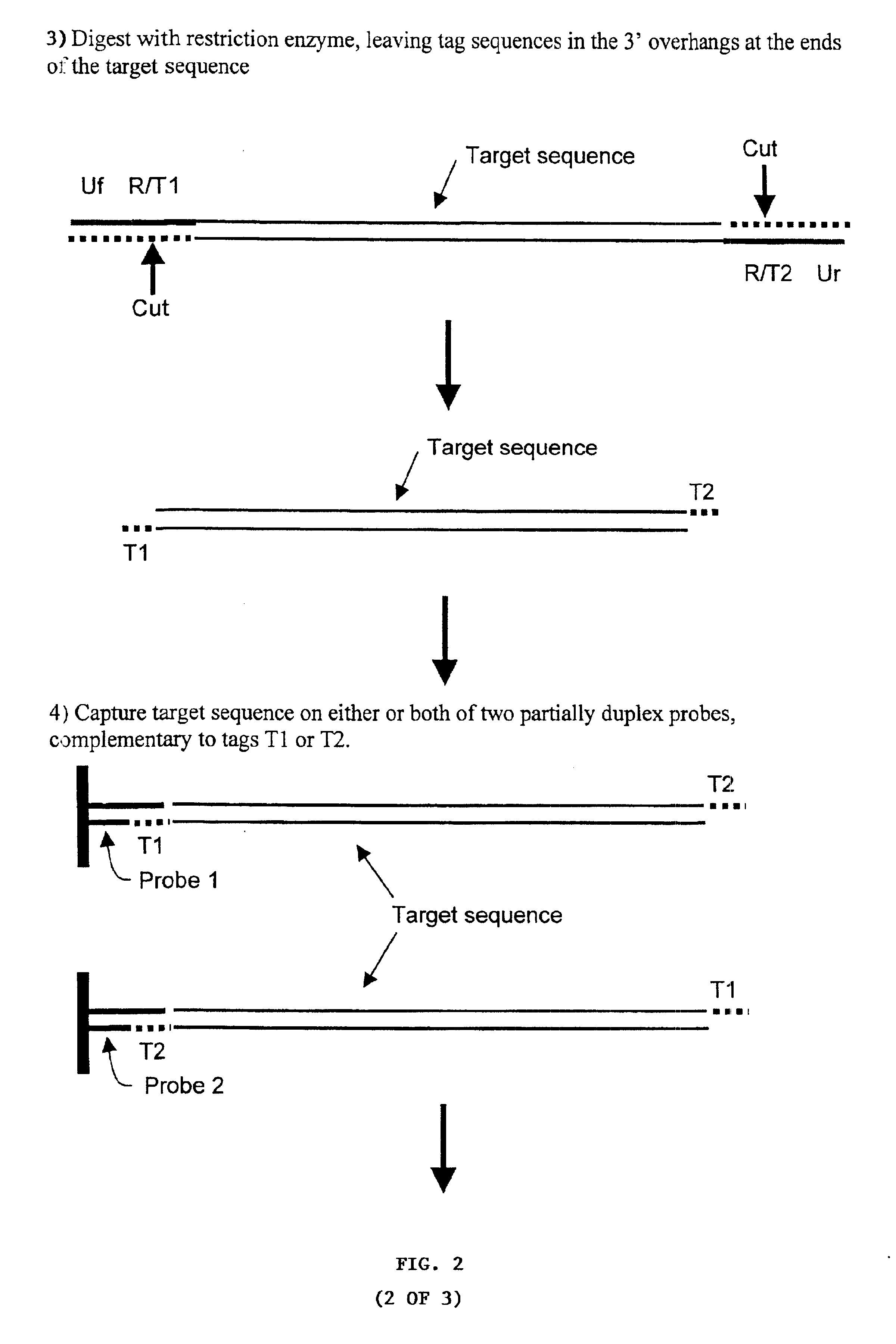Derivative nucleic acids and uses thereof
a nucleic acid and derivative technology, applied in the field of complex mixture analysis of nucleic acids, can solve the problems of poor hybridization specificity, many target sequences fail to amplify optimally, and the conventional microarray analysis is limited, so as to improve detection and/or specificity, increase the specificity of the method, and improve the effect of detection and/or specificity
- Summary
- Abstract
- Description
- Claims
- Application Information
AI Technical Summary
Benefits of technology
Problems solved by technology
Method used
Image
Examples
example 1
[0359]Multiplex PCR with Two Target-Specific Primers Incorporating Universal Primer Sequences, Type IIS Restriction Sites and Generic Capture Tags, followed by Capture of One or Both Target Strands of the Derivative Nucleic Acids
[0360]Many pairs of target-specific PCR primers / adapters (FIG. 1) are used for the multiplex amplification of many target sequences in a sample. Each of the PCR primers includes the following elements:[0361]1) Target-specific sequences, X, at the 3′ ends (Xf and Xr in FIG. 2);[0362]2) Two universal primer sequences (Uf and Ur) at the 5′ ends that are common to all the pairs of PCR primers used in an assay;[0363]3) The sequence for a Type IIS restriction endonuclease (R);[0364]4) One or two generic capture tag sequences (T1 and T2) at internal positions in the primers and at specific positions relative to the Type IIS restriction endonuclease recognition sites, such that a double stranded DNA molecule containing these sequences will be cleaved adjacent to the...
example 2
[0367]Target-Dependent Ligation and PCR Amplification of Contiguous Probes Incorporating Universal Primer Sequences, Type IIS Restriction Sites and Generic Capture tags, followed by Capture of One or Both Strands of the Derivative Nucleic Acids
[0368]Many pairs of target-specific PCR probe / primers (FIG. 3) are hybridized and ligated to different target sites in the nucleic acid sample. Each of the probe / primers includes the following elements (FIG. 3):[0369]1) Target-specific sequences at the 3′ end (X3′ and X 5′, respectively) which are complementary to contiguous sequences of the targets and which can be enzymatically ligated if, and only if, the probe sequences match the target sequence (e.g., the position marked “SNP”) at the termini;[0370]2) Two universal primer sequences (Uf and Ur) that are common to all the pairs of probes used in an assay;[0371]3) The sequence for a Type IIS restriction endonuclease (R);[0372]4) A capture tag sequence (T1 or T2 on the 5′ and 3′ probe / primers...
example 3
[0379]Target-Dependent Ligation and Amplification of Circularizable Probes containing Universal Primer Sequences, Type IIS Restriction Sites and Generic Capture Tags, followed by Capture of One or Both Strands of the Derivative Nucleic Acids
[0380]Many different circularizable probes are hybridized and ligated to different target sites in the nucleic acid sample. Each of the circularizable probes includes the following elements (FIG. 5):[0381]1) Target-specific sequences at the 3′ and 5′ ends (X3′ and X 5′, respectively) which are complementary to contiguous sequences of the targets and which can be enzymatically ligated if, and only if, the probe sequences match the target sequence (e.g., the position marked “SNP”) at the termini;[0382]2) Two universal primer sequences (Uf and Ur) that are common to all the circularizable probes used in an assay;[0383]3) The sequence for a Type IIS restriction endonuclease (R);[0384]4) One or two capture tag sequences (T1 and T2) at internal positio...
PUM
| Property | Measurement | Unit |
|---|---|---|
| volume | aaaaa | aaaaa |
| diameter | aaaaa | aaaaa |
| diameter | aaaaa | aaaaa |
Abstract
Description
Claims
Application Information
 Login to View More
Login to View More - R&D
- Intellectual Property
- Life Sciences
- Materials
- Tech Scout
- Unparalleled Data Quality
- Higher Quality Content
- 60% Fewer Hallucinations
Browse by: Latest US Patents, China's latest patents, Technical Efficacy Thesaurus, Application Domain, Technology Topic, Popular Technical Reports.
© 2025 PatSnap. All rights reserved.Legal|Privacy policy|Modern Slavery Act Transparency Statement|Sitemap|About US| Contact US: help@patsnap.com



